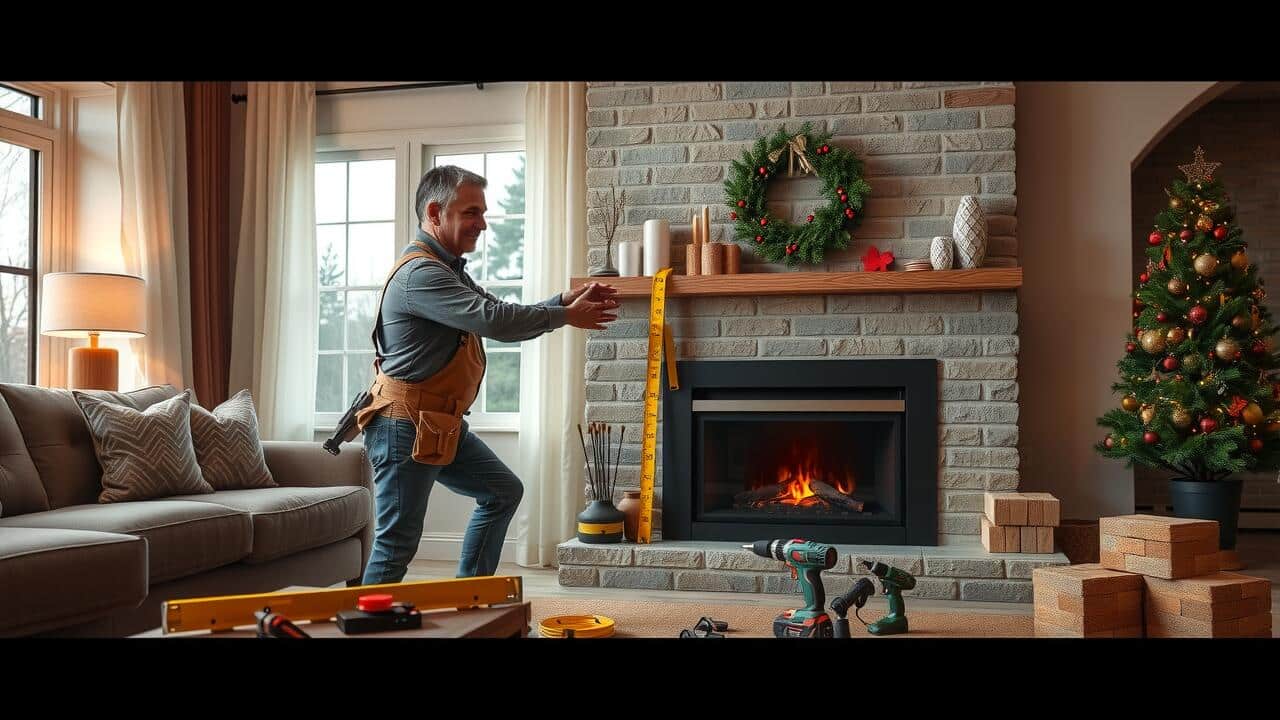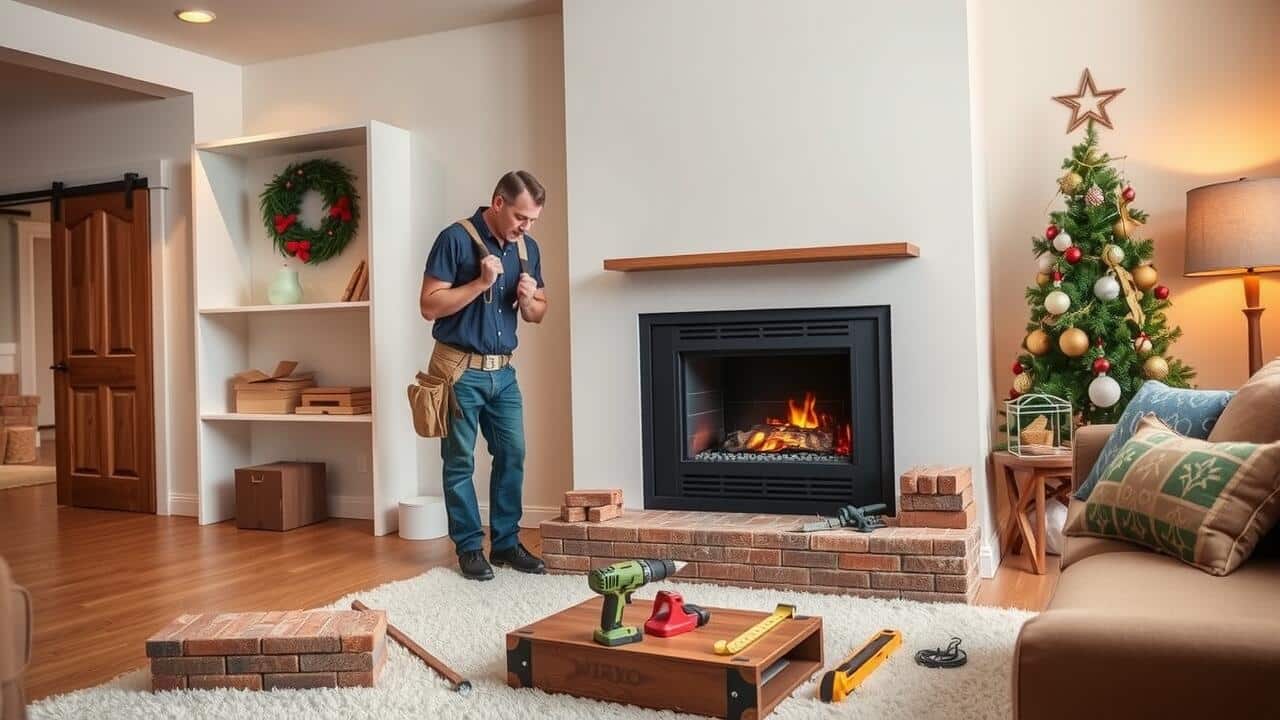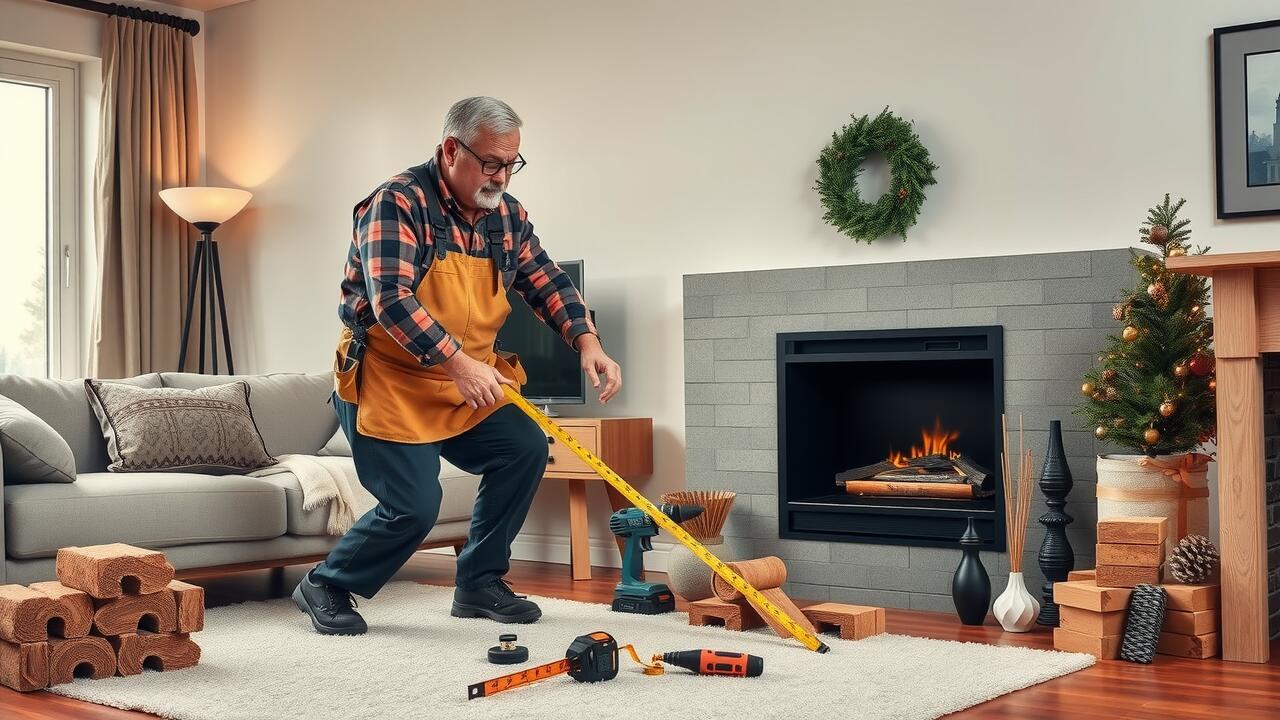Table Of Contents
Step-by-Step Installation Process
Begin by gathering all necessary materials and tools for your chimney fireplace installation. This includes bricks or prefabricated chimney components, mortar, a chimney cap, and a level. Carefully plan the location of the chimney, ensuring it’s positioned correctly relative to the fireplace and roof structure. Clear the area to provide a safe workspace. Follow manufacturer guidelines for any prefabricated parts to ensure compatibility and safety.
Next, lay the foundation for the chimney using concrete blocks if needed. Begin constructing the chimney from the ground up, ensuring each layer is level and secure. As you build, incorporate a flue liner to improve efficiency and safety. Regularly check your progress against local building codes. Pay special attention to the clearance needed from combustible materials. This will help ensure a safe and effective chimney that functions properly for years to come.
Detailed Guide to Building Your Chimney
Building your chimney requires careful planning and attention to detail. Begin by selecting the right materials, such as firebrick and mortar, which are suitable for high-temperature environments. You’ll need to create a sturdy foundation to support the weight of the chimney. Measure the height and width according to your chimney fireplace installation needs, ensuring it aligns with your home’s design. Begin the assembly by stacking the bricks and applying mortar between each layer. Proper alignment is crucial for both aesthetics and functionality.
As you progress with your chimney, include a flue liner for efficient venting of smoke and gases. This component helps to protect the structure from heat and corrosion. Make sure to integrate a cap at the top to prevent rain, debris, and animals from entering the flue. Additionally, consider incorporating a spark arrestor to reduce fire hazards. Consistently check for level and plumb as you build upwards, making adjustments as needed.
Safety Considerations
When undertaking a chimney fireplace installation, safety should be a top priority. Begin by familiarizing yourself with the materials and tools required for the process. Use fire-rated materials to ensure heat resistance and prevent any risk of fire hazards. Proper ventilation is essential to facilitate smoke evacuation, minimizing the risk of carbon monoxide buildup. Carefully inspect the area where the chimney will be installed to determine the best placement, avoiding any proximity to flammable structures.
Wear appropriate personal protective equipment during the installation to protect yourself from hazards. Gloves, safety glasses, and a dust mask can prevent injuries. Additionally, ensure that the chimney is properly anchored to withstand weather conditions. Regular inspections and maintenance of your new chimney will help ensure its longevity and safe operation. Being diligent in these safety measures not only protects your home but also contributes to a successful chimney fireplace installation.
Best Practices for a Safe Installation
When undertaking a chimney fireplace installation, it is crucial to prioritize safety by using high-quality materials that meet industry standards. Selecting non-combustible materials helps reduce fire risks. Ensure that the chimney’s design meets the specific requirements for the type of heating system being installed. Proper ventilation is also essential to prevent dangerous gas buildup, so maintaining appropriate clearances from combustible materials is a must.
Before starting any installation, familiarize yourself with the manufacturer’s guidelines as well as local building codes. Adhering to these regulations ensures a safe and compliant installation. It is also wise to consider hiring a professional inspector after completing the installation to verify that everything meets safety and performance standards. Regular maintenance checks post-installation will help keep the system functioning properly and safely.
Local Building Codes and Regulations
When planning a chimney fireplace installation, it’s crucial to consult local building codes and regulations. These guidelines can vary significantly between municipalities, and adhering to them ensures not only safety but also compliance with legal standards. Common requirements may involve specific materials, dimensions, and clearances from combustible structures. Ignoring these regulations can lead to fines or necessitate costly alterations.
Permits are often required for chimney fireplace installation. This process typically includes submitting plans to the local building department for approval. Inspectors may also conduct on-site evaluations during construction to ensure that all work meets the established safety criteria. Being aware of and following these regulations will help avoid potential issues down the line.
Ensuring Compliance with Legal Standards
When considering a DIY approach to your Chimney Fireplace Installation, it is crucial to familiarize yourself with local building codes and regulations. These rules serve to ensure the safety and efficiency of your installation. Many municipalities require permits for chimney constructions and renovations. Ignoring these regulations can result in fines or the need to dismantle your work. Investing time in research can save significant hassle down the line.
Additionally, consulting with local authorities or a qualified professional can provide clarity on the legal standards that must be met. Each jurisdiction may have specific requirements regarding chimney height, materials, and clearances from combustible structures. Ensuring your chimney complies with these standards not only protects your home but also enhances the safety of your fireplace system. Prioritizing adherence to legal guidelines is essential for a successful and responsible installation.
FAQS
Is it legal to install my own chimney?
In many areas, homeowners are allowed to install their own chimneys, but it’s crucial to check local building codes and regulations before beginning the project. Compliance with these standards is necessary to ensure safety and legality.
What materials do I need to build a chimney?
The materials required for building a chimney typically include firebrick, mortar, flue liners, chimney caps, and insulation. It’s important to choose high-quality, heat-resistant materials that meet local codes.
How long does it take to install a chimney?
The time required to install a chimney can vary based on your experience and the complexity of the design. On average, it may take anywhere from a few days to a week to complete the installation.
What are the safety considerations when installing a chimney?
Key safety considerations include ensuring proper clearance from flammable materials, using fire-resistant materials, and properly sealing joints to prevent leaks. It’s also advised to have a professional inspect your work.
Do I need a permit to install a chimney?
Yes, in most cases, you will need a permit to install a chimney. It’s best to check with your local building department to understand the specific requirements for permits and inspections in your area.


